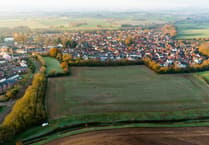More than 100 sites for future housing and employment in parts of Somerset have been put forward by landowners and developers.
SWAT (Somerset West and Taunton Council) has been reviewing its Local Plan, which dictates how many homes will be built in each part of the district over the next two decades.
Following an initial consultation held between January 13 and March 16, the council has published a list of sites suggested for future development – either for housing, employment land or a mix of different uses.
These sites will be subject to further consultation to determine how many homes or what kind of businesses should be permitted in each locality.
What is the Local Plan?
A Local Plan is a series of documents which sets out how many new homes should be delivered in a given area over the next 20 years.
As well as identifying sites for future housing, the plan will also allocate sites for employment, new schools, roads and other infrastructure projects, and will include policies for tackling climate change.
Before the current council was formed in April 2019, both Taunton Deane Borough Council and West Somerset Council both had their own separate Local Plans.
The new Local Plan currently will bring together these existing policies and update both the individual policies and the allocation of sites.
How many homes will end up being built by 2040?
The short answer is: we don’t know yet. The consultation saw more than 100 sites put forward for potential development, either by individual landowners or by major housing developers like Persimmon Homes South West, Redrow Homes, Taylor Wimpey and Vistry.
While the size of the sites has been stipulated, the policies governing the precise number of homes for each site – or the kind of business that could operate there – will not be set until a later date.
Could other sites be brought forward?
Yes – the sites listed in the current policy documents are not an exhaustive list. Smaller-scale developments – for instance, a small number of homes in one of the district’s many rural villages – may be brought forward at any time.
It should also be noted that the list of proposed sites does not include a number of sites already being developed.
Which settlements will have to take the most new homes?
Every Local Plan has a settlement hierarchy – a list of the major towns and villages, which are ranked in terms of how much future development they can reasonably be expected to take.
Taunton, already the district’s largest settlement, can expect to grow the most between now and 2040. Wellington is set to grow by the second largest amount and larger villages in the former Taunton Deane area – like Bishops Lydeard and Wiveliscombe – will also be expected to shoulder more housing.
In the West Somerset area, the bulk of development will be focussed on town and villages on what the council has branded the district’s ‘coastal strip’. This includes sites south of the A39 in Minehead, the former paper mill in Watchet, land near the West Somerset Railway in Williton and the Hinkley Point A site near Stogursey.
Where exactly will development happen in West Somerset?
These sites have been put forward for residential development in the next two decades: land north of Ellersdown Lane, Brushford; land north of A39 Main Road, Carhampton; land north of Bowerhayes Lane, Carhampton; land west of Winsors Lane, Carhampton; land north of Marsh Gardens, Dunster Marsh; land south of Marsh Lane, Dunster Marsh; land south of Sea Lane, Dunster Marsh; land south of A39 Hopcott Road, Minehead; Minehead Caravan and Motorhome Club site, A39 Hopcott Road, Minehead; land north of Bratton Lane, Minehead; land east of Porlock Road, Minehead; last east of Church Close, Old Cleeve; land east of Old Cleeve, Old Cleeve; Old Cleeve Farmstead, Old Cleeve; Former Vinnicombe Quarry site, West Quantoxhead; land south of A39 Long Street, Williton; land north of Greenway Lane, Wiveliscombe; land east of Nordens Meadow, Wiveliscombe; land east of North Street, Wiveliscombe.
In addition to these residential sites, the council has identified a number of others for ‘mixed use’ development – meaning they will deliver a mixture of houses, employment units, leisure facilities and other amenities.
The following sites are earmarked for ‘mixed use’ developments: Former Wansborough paper mill site, Watchet; land west of Manor Farm, Wiveliscombe.
The council created a local development order (LDO) in late-September, making it easier for small-scale employment developments – such as offices or industrial units – to be delivered.
The following site has been identified for major employment development: Land at Hinkley Point A site, near Shurton.
The council will announce further consultation on these sites and other policies relating to the Local Plan in the coming months.
Daniel Mumby
Local democracy reporter



